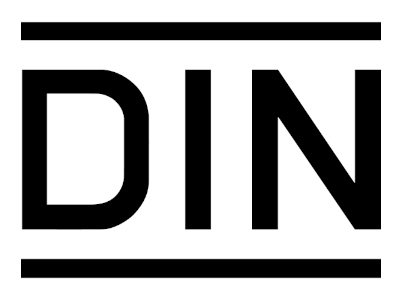DIN - German Standards
DIN is the abbreviation for "Deutsches Institut für Normung", German Institute for Standardization.
1. Name and First Publication Year
"DIN" is the abbreviation for "Deutsches Institut für Normung", German Institute for Standardization. It also refers to the German Standards (Deutsche Normen) developed by this organization.
The first DIN standard—DIN 1 "Taper Pins"—was published in March 1918.
2. Drafting, Maintenance Authority, and Publication Website
DIN standards are drafted and maintained by the German Institute for Standardization (Deutsches Institut für Normung e.V.). This organization is Germany's largest non-profit registered association for standardization, with broad representation. It was founded in 1917 and is headquartered in Berlin.
Official channels to access DIN standard texts:
The official website of DIN is: https://www.din.de. On this website, you can search the standards catalog, stay updated on the latest developments, and purchase official standard texts.
Please note that DIN standards are copyrighted official publications, and obtaining the full text usually requires purchase.
3. Main Content
DIN standards cover an extremely wide range of technical fields, aiming to promote rationalization, quality assurance, safety, and mutual understanding in industry, technology, science, management, and public affairs. Their main content can be summarized as follows:
Traditional Industry and Manufacturing: Such as construction engineering, mining, metallurgy, chemical engineering, mechanical manufacturing (e.g., standards for components like threads, gears, and bearings), and transportation.
Electrical and Electronic Technology: Electrical standards, safety technology, electrical insulators, and electronic products.
Safety and Environmental Protection: Safety technology, environmental protection, health, and fire safety.
Daily Life and Consumer Goods: Household management, packaging, and logistics.
DIN standards are not only effective throughout Germany but are also adopted by over 80% of European countries. They enjoy a high international reputation and often serve as the basis for the development of international standards (e.g., ISO standards).
4. Update Frequency
DIN standards undergo regular review and updates to ensure they reflect current technological advancements and market demands.
Regular Review: All standards are continuously revised after official publication, and a review is conducted at least every five years.
Update Drivers: The frequency and content of updates depend on factors such as technological progress, market demands, and changes in laws and regulations. This means that standards in rapidly evolving technical fields may be updated more frequently.
Update Process: During the revision process, DIN publishes drafts for public review, and formal standards are only published after considering public feedback.
Additional Information
DIN standards are crucial for German industry and the economy. According to statistics, DIN standards contribute approximately €16 billion in annual benefits to the German economy, accounting for about 1% of Germany's GDP. Many DIN standards are adopted as European standards (EN) or international standards (ISO). For example, the well-known DIN EN ISO 9001 (Quality Management Systems) follows this pattern.


